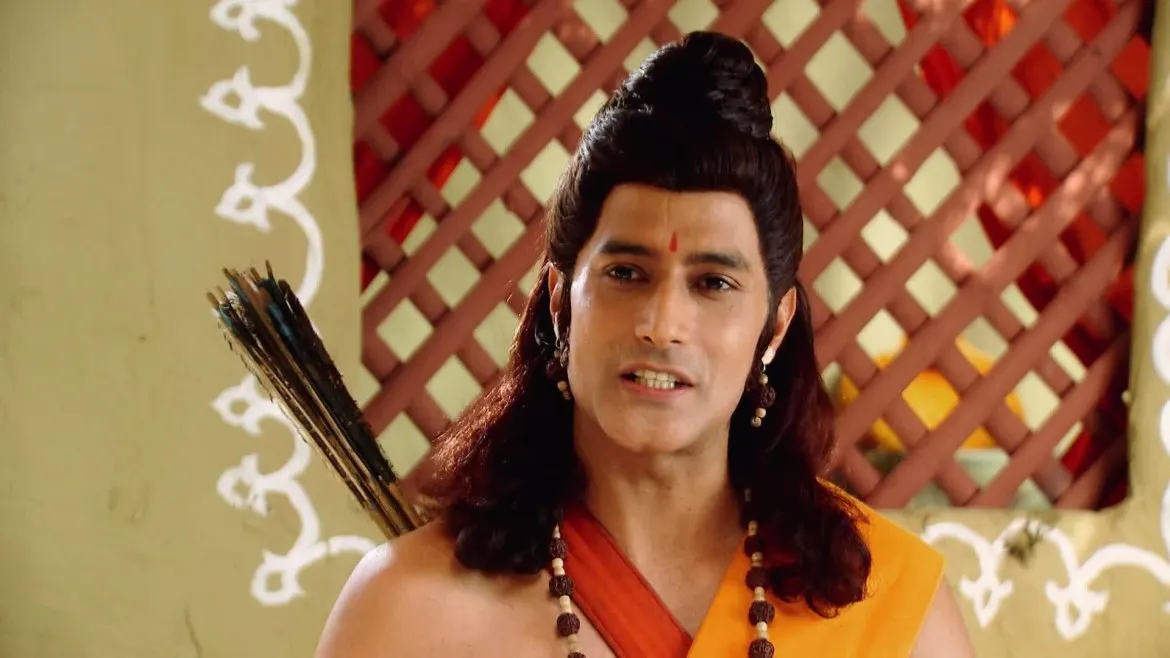

We also list some well known compositions in this raaga and finish with an short alapana that features the key Bilahari phrases we heard in the Pallavi of the composition Kamakshi Varalakshmi.Įpisode 72: Featured Composition - Kamakshi Varalakshmi Vidya shares with us the basic contours of this raaga, and discusses why it is typically considered a lively one to perform on the concert platform.
#Ramayan 2008 episode 34 series#
Pallavi, Anupallavi and Charanam to show us a glimpse of the form and flow of this raaga.Ĭontinuing our discussion from Episode 72, we take a minor detour from our series on compositions dedicated to Kanchipuram and feature the raaga Bilahari. Vidya shares with us the meaning of this song, and uses the three segments of this composition, i.e.

In this concluding episode of our sub-series featuring compositions on the temple town of Kanchipuram, we feature a Shyama Shastri composition: Kanakashaila Viharini in the raaga Punnagavarali. Vidya also elaborates on the concept of Madhayama Sruti, which involves a shifting up the fundamental note to the original Ma (4th note from the fundamental).Įpisode 74: Featured Composition - Kanakashaila Viharini

We discuss how this raaga offers limited improvisational scope, and yet has been used by all three of the trinity composers. Vidya shares with us the probable origins of this traditional raaga in the music of snake charmers as well as its scale and structure. In this episode we feature the raaga Punnagavarali. Semmangudi Srinivasa Iyer.Įpisode 75: Featured Raaga - Punnagavarali We conclude the episode with a snippet from a rendering of a Shyama Shastri composition by the stalwart musician, Sri. Vidya discusses his compositional format, style, and contributions to the field of Carnatic music. Shyama Shastri is the oldest of the relatively contemporary trinity of Carnatic music (the other two being Tyagaraja and Muthuswami Dikshitar). In this episode we feature the renowned composer: Shyama Shastri. Vidya covers the high-level meaning of the song as well as showcases some of the salient Saveri phrases that Shyama Shastri has skillfully used in the Pallavi of this song.Įpisode 76: Featured Composer - Shyama Shastri In this episode we feature a Shyama Shastri composition: Sankari Sankuru, in the raaga Saveri set to Adi tala in Tisra gati. Using several phrases and snippets from the Anupallavi and Charanam portions of this composition, Vidya illustrates how the composer has skillfully weaved in some of the subtle nuances of this wonderful raaga.Įpisode 77: Featured Composition - Sankari Sankuru - Part I We continue our analysis of the Shyama Shastri composition: Sankari Sankuru in the raaga Saveri. Vidya sings snippets from the Pallavi to demonstrate this interesting aspect of the composition.Įpisode 78: Featured Composition - Sankari Sankuru - Part II Shyama Shastri has masterfully composed this song such that the rhythm can be kept in either of two talas, the Rupaka tala or the Adi tala in tisra gati. Vidya introduces the audience to the core tala construct used in this composition. In this episode we continue our discussions on "Shankari Shankuru", a composition by Shyama Shastri. Using examples from various parts of the song, Vidya goes into greater detail and lays out how the tala construct and specific syllables in the lyric connect up in the two talas - Rupaka tala and Adi tala in tisra gati.Įpisode 79: Featured Composition - Sankari Sankuru - Part III In this concluding episode of the sub-series on the composition "Shankari Samkuru" by Shyama Shastri we continue our discussion on how Shyama Shastri has masterfully employed the concept of dual tala. Your comments, thoughts, suggestions, ideas, and critiques are welcome!Įpisode 80: Featured Composition - Sankari Sankuru - Part IV Wish you could listen a concert with a deeper understanding? Are you a connoisseur who wants to discuss and explore intricate nuances? Join us on this musical journey! We look forward to hearing from you. (This is an alternate back-up site for Rasika is a series of weekly podcasts and interviews exploring the world of Carnatic Music!Ĭarnatic music is one of the two main styles of Indian Classical music most prevalent in the southern part of India, comprising of the states of Andhra Pradesh, Karnataka, Kerala, and Tamil Nadu.Īre you a novice just getting exposed to Carnatic Music? Welcome to Raaga Rasika: Podcasts that Explore the World of Carnatic Music!


 0 kommentar(er)
0 kommentar(er)
